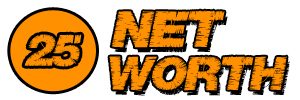Today we look at 10 of the largest atom bomb detonations including the immensely powerful and feared Tsar Bomba and the Soviet Tests 219-147.
Between 1945 and 1992, over 1,054 atmospheric, underwater, and space nuclear weapons tests were carried out by The United States and Russia
10. B83 Bomb

Described as a variable-yield unguided bomb developed by the United States in the late 1970s, B83 had a maximum yield of 1.2 megatons, over 80 times that of the bomb dropped on Nagasaki.
Designed at the Lawrence Livermore National Laboratory the B83 bomb test took place on the 15th December 1984 in Nevada at Area U19ac.
The bomb was detonated underground, as were many of the earlier bombs and was also reportedly test fired in the Grenadier Tierra nuclear weapon test on 15 December 1984.
At a length of 12 feet the bomb weighs approximately 1,100 kilograms and can be carried by a number of aircraft today including the F-22 Raptor and the F-15E Strike Eagle.
Over 650 B83 bombs were originally created and the after the last B53 bomb was dismantled as late as 2011, this bomb became the highest yeild weapon in the U.S arsenal.
The weapon was one of those considered for use in the Nuclear Bunker Buster project and it has also been considered for asteroid impact avoidance strategies for near earth asteroids.
9. Castle Nectar

Organized into seven experiments, the castle series of explosions was named Operation Castle and took place during 1954.
The TX-15 prototype lithium fuel for fission boosting and was detonated on April 5, 1954 on a Barge in MIKE crater, Enewetak.
Manufactured at the Los Alamos Scientific Laboratory, the 1.8 Megaton blast was a nuclear fission explosion that was used to create high temperatures and pressures to compress a second fissionable mass.
The whole experiment around this bomb was intended to develop intermediate yield weapons for expanding the inventory at large.
Interestingly, the Nectar test differs completely from every other test in the Castle series.
8. Castle Union Atom Bomb

The second test in the Castle series of explosions, Castle Union was the first test of the TX-14 thermonuclear weapon.
One of the first deployed U.S. thermonuclear bombs, Union was a dry fusion bomb that used lithium deuteride fuel for the fusion stage.
The test took place on April 26, 1954 at Bikini atoll in the Marshall Islands not far from Yurochi island and the yield of 6.9 megatons of TNT was larger than expected.
The test left a crater over 3,000 feet in diameter and 90 feet deep, but only a limited number of these weapons could ever be made due to the scarcity of highly enriched lithium.
Extensive fallout was caused by these tests and while it not as bad as the Castle Bravo test, which we will get to later, it helped bring about the partial test ban treaty of 1963.
7. B53 Atom Bomb

Developed by the United States during the Cold War, the B53 high-yield bunker buster thermonuclear weapon was originally deployed on Strategic Air Command bombers.
With a yield of 9 megatons, it was the most powerful weapon in the U.S. nuclear arsenal until its retirement and led to the creation of the W-53 warhead carried by the Titan II Missile.
Fifty B53s were retained during that time as part of the hedge portion of the Enduring Stockpile with the last bomb disassembled on 25 October 2011.
The bomb, which was still in development was part-tested on the 28 June 1958 as operation Hardtack Oak test.
The weapons remained in active service until the late 1980’s when the Titan II program was scrapped and g the last remaining B53 bomb in the stockpile was disassembled in 2011.
6. Ivy Mike Atom bomb

The first full-scale test of a thermonuclear device, in which part of the explosive yield comes from nuclear fusion, Ivy Mike yielded an explosive power of 10.4 Megatons.
Detonated on November 1, 1952, by the United States on the island of Elugelab in Enewetak Atoll, a staged fusion device, nicknamed the Teller–Ulam design was used.
The device was never intended to be suitable for use as a deliverable weapon and was mainly used as a proof of concept experiment.
This test was one of only a few to discover several new elements including einsteinium and fermium while scientists found traces of the isotopes plutonium-246 and plutonium-244.
Several air force pilots flew directly into the atomic clouds generated from Ivy Mike and one pilot, Jimmy Robinson crashed and sank 3.5 miles short of the island with his body never recovered.
The two new elements discovered were named in honor of Albert Einstein and Enrico Fermi.
5. Castle Romeo Atom Bomb – 11 Megatons

Detonated on March 26, 1954, at Bikini Atoll of the Marshall Islands, this bomb was sat on a barge moored in the middle of the crater from the Castle Bravo test.
One of the more important tests, this bomb became the first air-droppable thermonuclear device and only five were ever made.
Some of the largest yield devices deployed by Strategic Air Command, they were all out of service by August 1957.
The bomb produced a yield far greater than expected due to the known about but unexpected participation of the common lithium-7 isotope in fusion reactions.
The test was the third largest ever detonated by the United States and created one of the most iconic images ever taken of a detonation that has been used in several media publications since.
4. Castle Yankee Atom Bomb

Another one of the larger castle-series tests, carried out in Bikini Atoll, Yankee released energy equivalent to 13.5 megatons of TNT, the second-largest yield ever in a U.S. fusion weapon test.
Originally intended to be a test of a weaponized version of an Ivy Mike device, the Runt II device was developed from the Castle Romeo experiment.
Detonated on May 5, 1954, at Bikini Atoll of the Marshall Islands, a large percentage of the yield was produced by fast fission.
Although it had been predicted to produce a yield of 6 to 10 megatons, the natural uranium tamper has been blamed for a number of excessive detonations over the years including the Castle Bravo detonation which we cover next.
3. Castle Bravo – 15 Megatons

The first in the castle series of tests, conducted at Bikini Atoll in the Marshall Islands, the device was detonated on March 1, 1954 and is so far, the largest ever detonation by the United States Military.
The first lithium deuteride fueled thermonuclear weapon, Bravo’s yield was 15 mega-tonnes of TNT 2.5 times higher than the predicted 6 mega-tonnes.
At the time, Bravo was the most powerful artificial explosion in history and fallout was extensive, falling on residents of Rongelap and Utirik atolls with gaseous fallout spreading worldwide.
The inhabitants of the islands were not evacuated until three days later and suffered radiation sickness while twenty-three crew members of a Japanese fishing vessel also suffered symptoms.
When Bravo was detonated, within one second it formed a fireball almost 4.5 miles across that was visable from over 400km away and left a crater 6,500 feet in diameter and 250 feet deep.
The mushroom cloud reached a height of 47,000 feet and a diameter of 7 miles in less than a minute while over 7,000 square miles of the Pacific ocean was contaminated with radioactive fallout.
Castle Bravo was about 1,000 times more powerful than each of the atomic bombs that were dropped on Hiroshima and Nagasaki during World War II.
2. Soviet Tests 219-147

Several large nuclear explosions that were detonated by the Soviet Union and conducted on Suknoy Nos, a region on the northern Russian archipelago of Novaya Zemly, are rarely talked about in history.
Soviet Test 219, detonated in 1962, despite being the second largest nuclear explosion of all time, does not have any released photographs or videos and both its height and destructive radius are estimated at 24,200 Kilotons.
The other three tests, all smaller were also conducted in the same area over the same year and are thought to be perfection tests that reached heights of between 38 and 39 km and yields of between 19 and 21,000 Kilotons.
Test 219 was carried out using an intercontinental ballistic missile with the bomb exploding at a height of 2.3 miles.
The Soviet Union conducted 78 nuclear tests overall but due to the extreme secrecy, most of these will never see the light of day.
1. AN602 AKA Tsar Bomba

Nicknamed Big Ivan, Tsar Bomba, detonated on 30th October 1961, was so large that it needed a specially designed plane to carry it to its destination.
Attached to a giant parachute to give the plane time to fly away, the yielding 50,000 kiloton explosion obliterated an abandoned village 34 miles away and caused its own magnitude 5 earthquake.
Originally designed as a 100,000 kiloton bomb, its yeild was reduced by the Soviets and its mushroom cloud reached over 60 kilometers and through the top of the stratosphere.
A secret U.S. reconnaissance aircraft named “Speed Light Alpha” monitored the blast, coming close enough to have its anti-radiation paint scorched.
Visible at a distance of more than 1,000 km in Norway, Greenland and Alaska, the blast wave from the detonation circled the globe three times and caused a sizemic wave in the earths crust.
The resulting explosion caused glass to shatter in windows on Dikson Island, over 780km from the blast site and radio transmissions were disrupted over hundreds of kilometers.
Interestingly, radioactive contamination posed practically no danger to the test participants who were at the site two hours later.
Far more dangerous than radiation was heat from the explosion, which could have caused third-degree burns af rar as 100 km from the bomb.
The testing of the super-bomb was the last in a series of growing tests and in 1963, the Treaty Banning Nuclear Weapon Tests in the Atmosphere, Outer Space and Under Water was signed by Moscow and Washington.
Thanks for watching this video on the Top 10 Largest Nuclear & Atom Bomb Detonations, remember to hit that subscribe button with the bell icon and like the video for more great weekly content coming this year!








